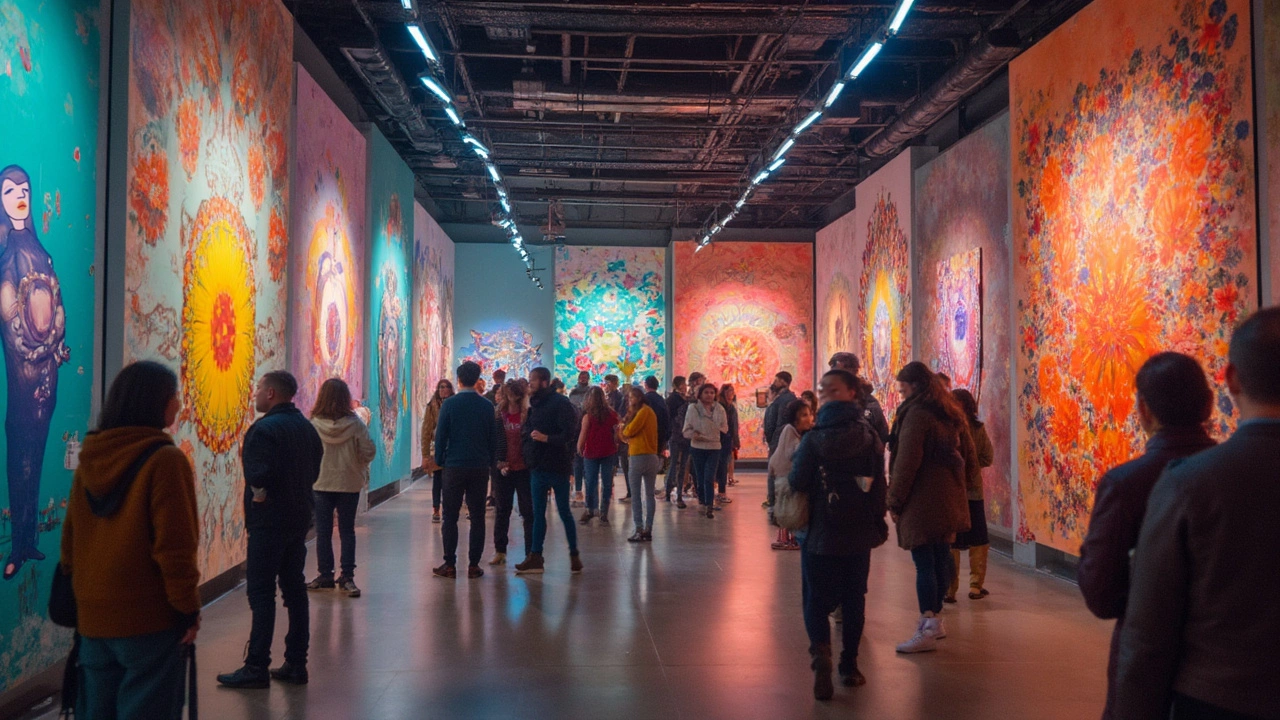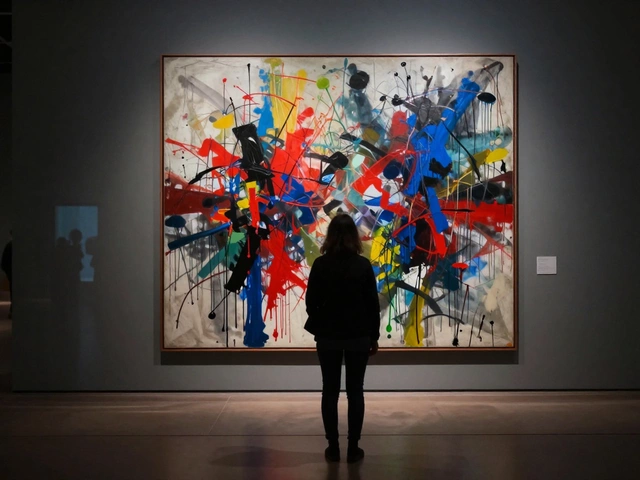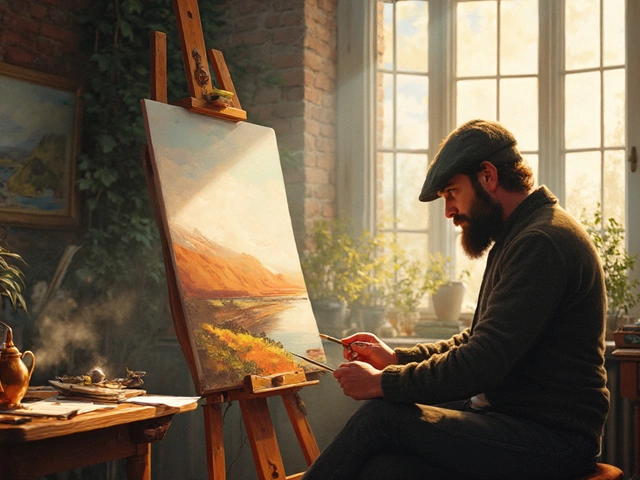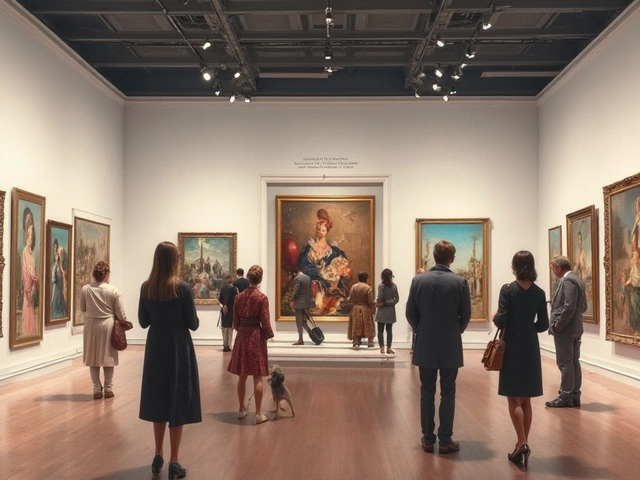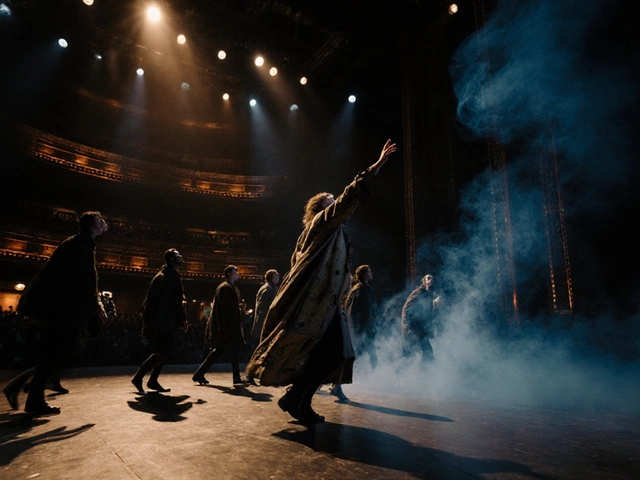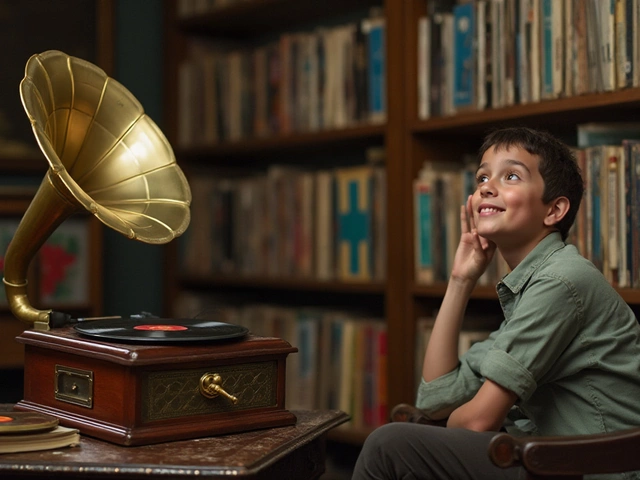Contemporary art can feel like a puzzle sometimes, right? It's constantly changing and often leaves us scratching our heads. But guess what? That's the fun part! At its core, contemporary art is all about breaking the rules and pushing boundaries—artists experiment and innovate like there's no tomorrow.
A lot of contemporary art dives deep into social and political issues. Wanna make a statement about climate change or social justice? Art is a powerful megaphone for that. Take Ai Weiwei, for example—his installations have sparked conversations worldwide about human rights and freedom of expression.
Now, here's where it gets wild: contemporary art often puts ideas over aesthetics. The concept is king. It's like when Damien Hirst displayed a shark in formaldehyde and called it art. The real masterpiece was the conversation it sparked about life, death, and the nature of art itself.
- Innovation and Experimentation
- Social and Political Commentary
- Concept Over Aesthetics
- Diverse Mediums and Techniques
- Global and Cultural Perspectives
Innovation and Experimentation
When it comes to contemporary art, it's all about shaking things up. Artists today are ditching the traditional brushes and canvases and getting creative with new mediums. It's a playground of possibilities, where rules are made to be broken.
Breaking Boundaries
In the world of contemporary art, there's no longer a one-size-fits-all approach. Artists are tapping into technology, digital media, and even unconventional materials like recycled goods and found objects. Imagine walking into an art gallery and being greeted by a massive balloon sculpture or a room filled with LED lights. It's all about creating an experience—making you feel, think, and maybe even rethink the world around you.
Take Olafur Eliasson, for example. His groundbreaking work, "The Weather Project," used hundreds of lamps and haze machines to create a huge artificial sun inside the Tate Modern in London. Visitors were not just observers; they became part of the art themselves. This kind of interactive approach changes how we traditionally engage with art.
The Influence of Technology
Tech has become a game-changer for modern art. Virtual reality, AI, and digital art forms are introducing new ways to create and perceive art. Remember when Beeple's digital artwork sold for $69 million as an NFT? It was a wake-up call to the art world, spotlighting how digital innovation can redefine art's value and accessibility.
3D printing, too, has expanded what's possible—artists can now produce intricate sculptures that would have been impossible by hand. It speeds up production while allowing more complex designs, pushing the limits of creativity.
Collaboration and Cross-Pollination
Contemporary artists love to collaborate, often drawing inspiration from seemingly unrelated disciplines like science, fashion, and even gastronomy. This cross-pollination gives rise to unique art forms that challenge our perceptions and broaden our understanding of what art can be.
There's a strong sense of community and shared creation in contemporary art. Artists today aren't solitary geniuses; they're often part of collaborative projects that can span across countries and cultures. Just think of global art festivals where artists come together to work on giant murals or communal installations, sharing skills and merging artistic visions.
Whether through cutting-edge tech or unexpected materials, innovation and experimentation are the heart of contemporary art. It's not just about what we see; it's about what we feel and how we connect with a piece. It's a constant conversation, ever-evolving and full of surprises.
Social and Political Commentary
Let's face it, in today's world, you can't swing a paintbrush without hitting some kind of controversy. That's because contemporary art often thrives on social and political commentary. This isn't just art for art's sake; it's about making you stop, think, and maybe even change your perspective.
Artists like Banksy have made a name by turning street art into bold political statements. Banksy's works are often layers deep, tackling issues like consumerism and immigration. Not just pretty pictures, right? They challenge viewers to question the world we live in.
Then there's the incredible Kara Walker. Her art sheds light on racial, gender, and identity issues through intricate silhouettes and large-scale installations. It's powerful stuff, designed to spark dialogue and bring often uncomfortable truths to the forefront.
Utilizing Various Mediums
Contemporary artists use every tool in the toolbox to get their message across—paint, sculpture, video, you name it. It's like they found every way possible to shape public discourse. Video art is a biggie, with artists like Hito Steyerl turning to moving images to critique capitalism and technology.
Take a peek at social media: just scrolling through your feed, you'll find artists using memes as political art forms. The digital age has given contemporary artists a wider stage to highlight and challenge societal norms.
Global Impact and Reach
Interestingly, this focus on social and political commentary has a global reach. Issues like climate change reflect in Olafur Eliasson's work, making art not just a local affair but a global one. And what’s amazing is how these artistic expressions resonate across different cultures, sparking international conversations.
Recent Trends
| Year | Trend |
|---|---|
| 2023 | Art focused on AI advancements and privacy |
| 2024 | Rising focus on environmental art |
Ultimately, contemporary art today is like a mirror reflecting the issues and complexities of the society we live in. It isn't just about decoration; it's a movement urging us to contemplate, converse, and sometimes even take action.
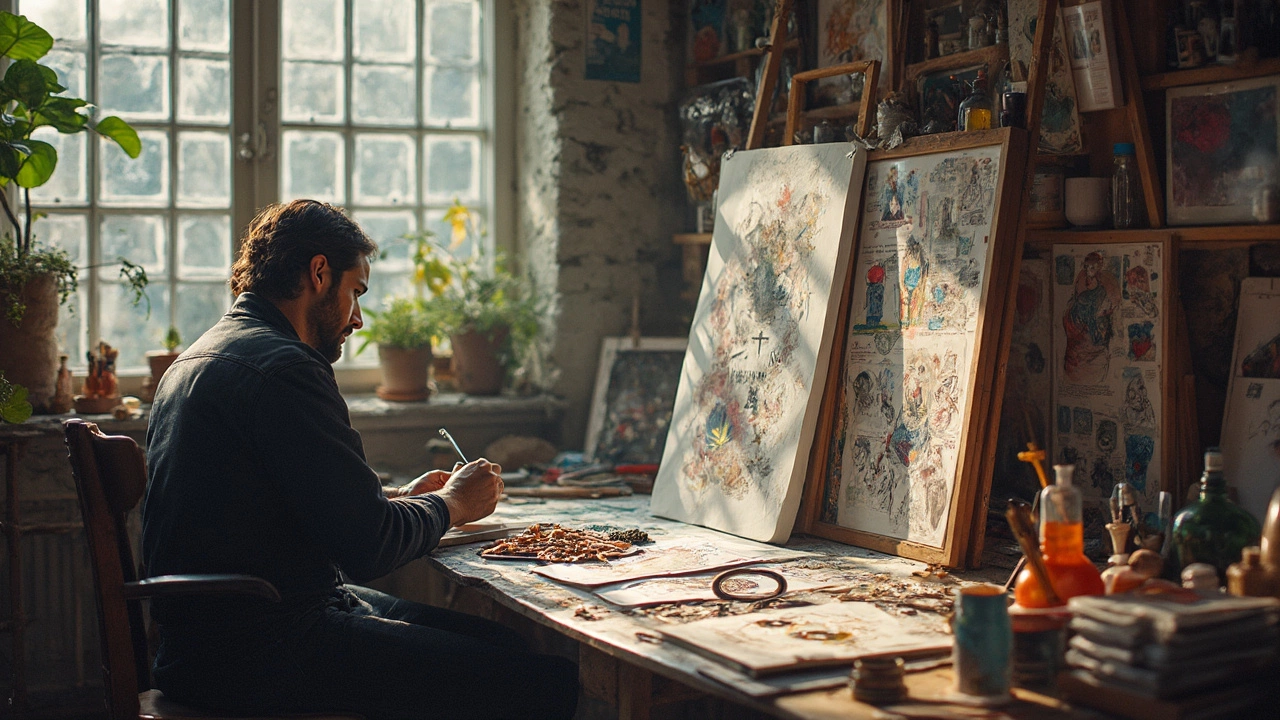
Concept Over Aesthetics
Alright, let's get into this whole idea of concept over aesthetics. In the world of contemporary art, this isn't just a trend—it's pretty much a paradigm shift. Nowadays, artists focus more on what their piece is saying, rather than how it looks.
Take Sol LeWitt for instance, one of the pioneers of conceptual art. He emphasized that the 'idea or concept is the most important aspect of the work.' It's like saying the thought behind the art is more valuable than the art itself. We see this approach in works like LeWitt's 'Wall Drawings,' where the concept is so precise, other people can execute it.
Then there's Yoko Ono. Her 'Grapefruit' book is filled with instructional pieces that invite you to imagine the artwork in your mind, making the idea more compelling than any physical object could be. It’s like art is happening inside your head! Cool, right?
So why is this shift happening? One big reason is that it pushes viewers to engage on a more intellectual level. You can't just glance at a conceptual piece and walk away. It invites questions, debates, and personal interpretation.
Art You're Meant to Think About
One of the biggest draws of prioritizing concept is how it democratizes art. You don't need to be an art snob to get it. Anyone can have thoughts and opinions, and that's what conceptual art thrives on.
Some artists even use everyday objects to challenge traditional notions of what art is. Remember Marcel Duchamp's 'Fountain'? An ordinary urinal became one of the most famous pieces of the 20th century just because it was placed in a different context.
Impact on the Art World
Putting ideas first has really opened up the art world. It's not just about paint on canvas anymore. You have installations, performances, and digital mediums all becoming part of the conversation.
With technology advancing, artists are even getting into virtual reality and AI-generated art. Imagine stepping into an artwork or having a piece react to you in real-time—it's not just art, it's an experience.
Diverse Mediums and Techniques
In the world of contemporary art, the days of sticking to paints and canvas are long gone. Artists today are ditching traditional methods and exploring a wild variety of mediums. Think about it—art can be anything from digital installations to performance pieces, making it a truly exciting field.
Take digital art, for instance. With technology advancing at lightning speed, artists are embracing virtual reality and augmented reality to create experiences that immerse viewers in new worlds. The famous digital artist, Beeple, made headlines by selling an NFT of his digital artwork for a whopping $69 million at a Christie's auction. It's a testament to how tech-savvy approaches are reshaping modern art.
But that's not all. Let's talk about art made from discarded materials—a concept close to the heart of many eco-conscious artists who are highlighting environmental issues. The artist Vik Muniz, for example, uses garbage collected from landfills to create stunning compositions that challenge our view of waste and beauty.
Mixing Techniques: Why Pick One?
You might wonder, why stop at one medium when you can blend several? Many contemporary artists mix materials to add layers of meaning. They might combine photography with traditional paintwork or fuse sculpture with moving images. It all creates a rich tapestry that makes you want to dive deeper into the artist's message.
What’s mind-blowing is how textiles and fabric have become a playground for artists to critique social norms and heritage. Consider the work of artist Tschabalala Self—she uses fabric collages to construct bold narratives about identity and race, offering a fresh take on art concepts.
The tools of the trade have evolved too. 3D printing is now a thing in art studios, allowing artists to craft intricate designs that would've been unimaginable a few decades back. This tech-driven evolution democratizes art-making, overcoming barriers and opening new avenues for creativity.
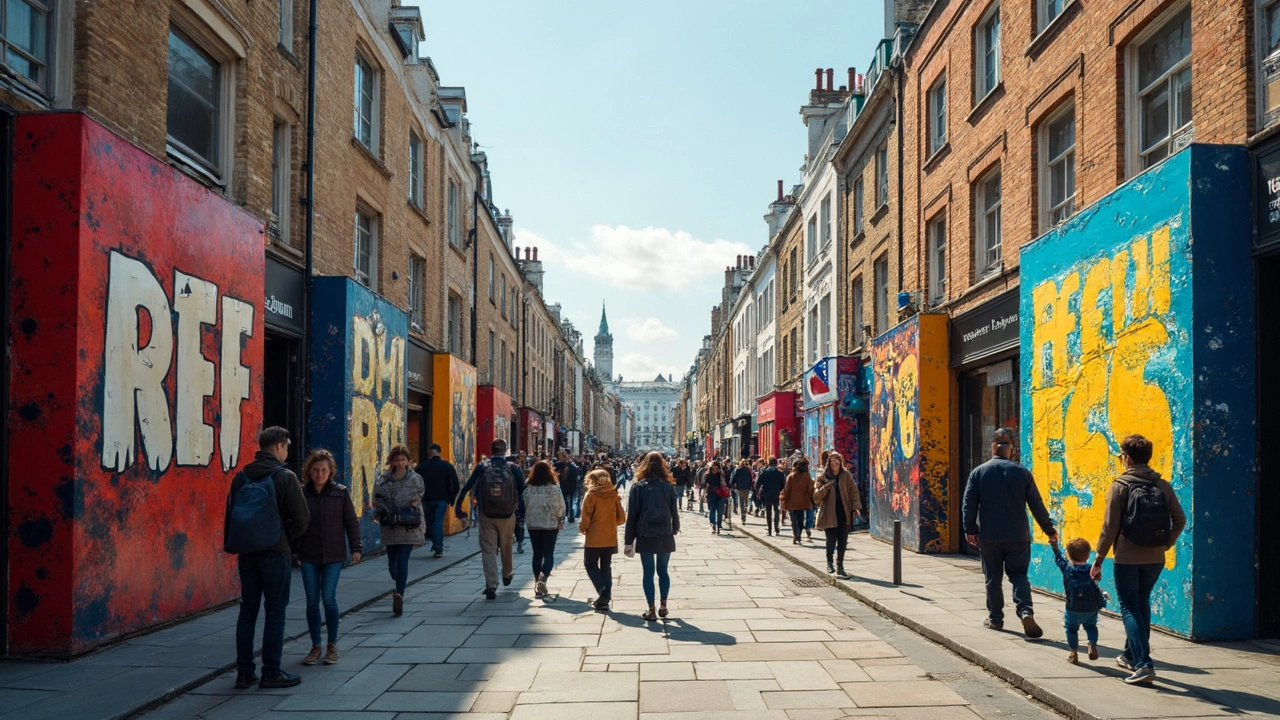
Global and Cultural Perspectives
Contemporary art has a knack for showing us just how interconnected our world is. Artists from all over the globe bring their own unique cultural perspectives to the table, creating a rich tapestry of ideas and experiences. It's like a massive conversation where everyone has a seat.
One fascinating element of modern art is how it reflects the cultural melting pot of today's society. Did you know that more art from outside the Western world is being appreciated in big, influential galleries? Yup, it's not just a European or American party anymore—Asian, African, and Latin American artists are right there, making waves.
Take El Anatsui, a Ghanaian artist whose work with recycled materials speaks to both local traditions and global issues like consumerism and waste. His art is a perfect example of how local culture and global topics can blend to create something innovative.
The Influence of Globalization
With the internet and social media bringing everyone closer, artists now have a platform to share their contemporary art across borders. This has led to some pretty exciting collaborations and a fresh mix of styles. Still, this global stage isn't without its issues. The art world sometimes debates about cultural appropriation vs. appreciation. It's a balancing act between sharing and respecting cultural uniqueness.
"Art is to console those who are broken by life," said Vincent van Gogh, and that solace can now be shared across geography and cultures, breaking barriers and building understanding.
Feeling intrigued yet? Well, contemporary art gives us a window into diverse ways of life, encouraging empathy and understanding. It’s a reminder that while our stories may be different, art has the power to connect us all.
